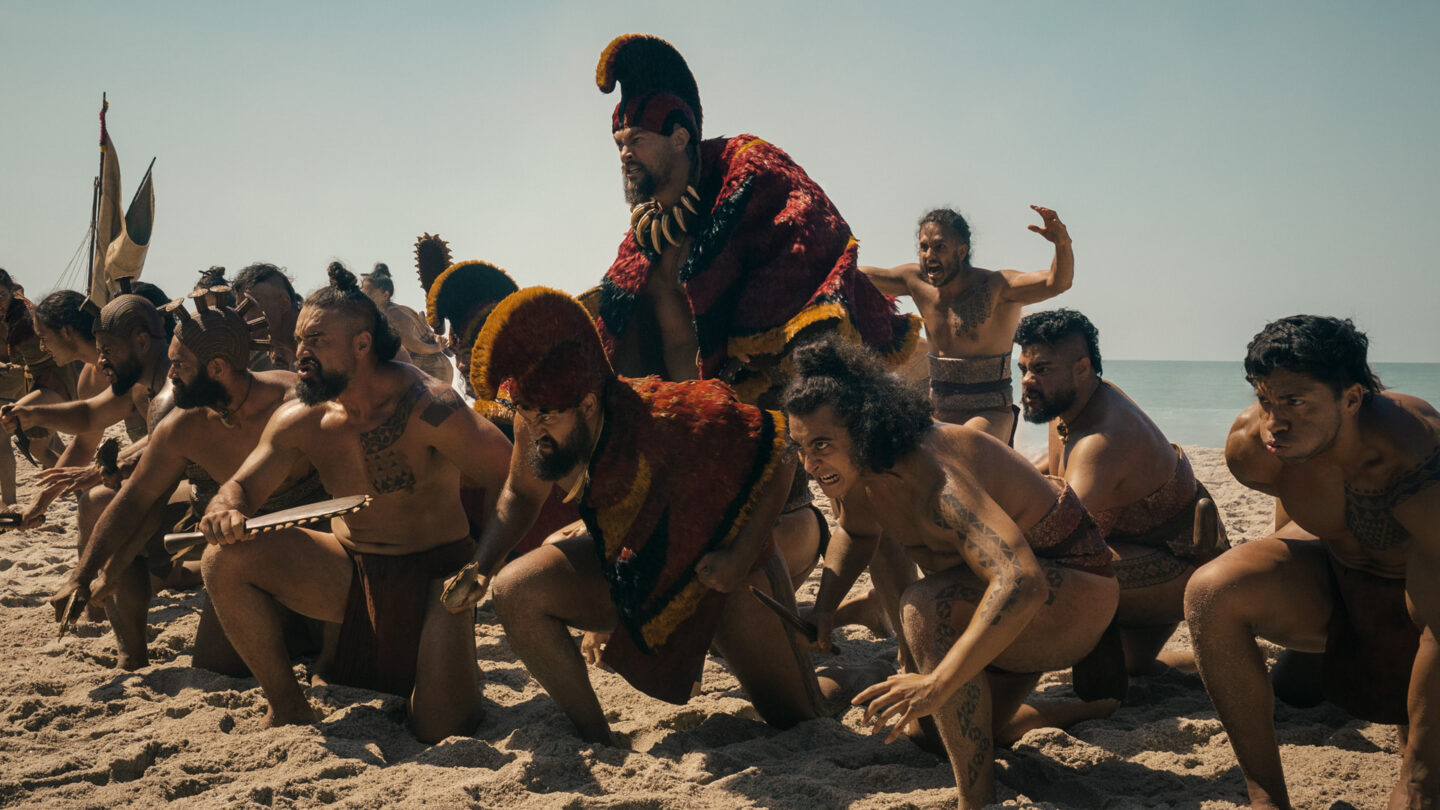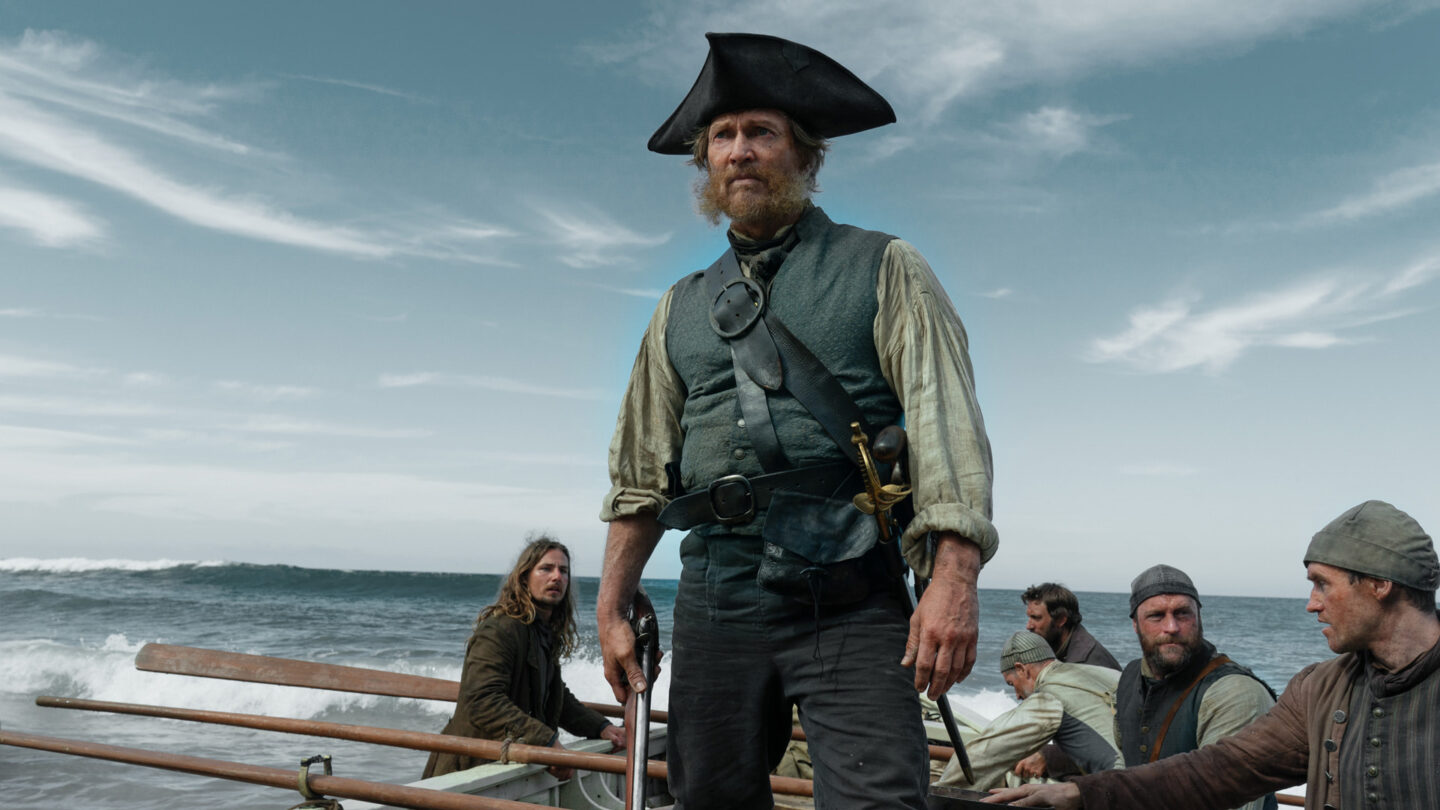While historical dramas often recycle familiar European or American narratives, Apple TV+’s Chief of War breaks cool new ground by exploring less-charted territory. The ambitious production transports viewers to 19th-century Hawaii, offering an authentic indigenous perspective on a pivotal period rarely depicted in mainstream media.
It’s bloody and brilliant. And you end up seeing Jason Momoa’s nearly bare backside so often that you just become numb to it.
Kidding aside, it only takes the first three episodes now available to stream as of Friday to see that Chief of War isn’t just another historical drama. It’s more of a cultural phenomenon that challenges conventional storytelling while delivering the great-looking cinematic work Apple TV+ subscribers have come to expect. The series masterfully weaves together political intrigue, cultural authenticity and human drama in ways that should captivate history buffs, cultural diversity seekers, bloodthirsty battle lovers and pretty much anyone hungry for some fresh storytelling.
3 reasons to watch Chief of War on Apple TV+
A passion project of native Hawaiians Momoa (See, Aquaman) and co-creator Thomas Pa’a Sibbett, Chief of War seems to hit the spot for audiences and already ranks high among streaming TV shows. In early August, it scored the number-three slot among streaming TV shows and the number-five spot overall in ReelGood’s rankings. On reviews site RottenTomatoes.com, it rocks a Tomatometer critical score of 93% Fresh and a Popcornmeter audience score of 82% Fresh. Watch all the trailers and learn more about the show. And see some good reasons to join the enthusiastic tribe of viewers below and watch the series.
1. Authentic Hawaiian perspective transforms historical storytelling
Chief of War distinguishes itself by centering on Hawaiian voices and perspectives in ways mainstream media never really has. Unlike typical historical dramas that impose Western narrative structures on indigenous stories, this series allows Hawaiian culture to drive both plot and character development organically.
The show’s commitment to authenticity extends well beyond a surface level. Characters speak in authentic Hawaiian language throughout key scenes, with subtitles that never feel intrusive or patronizing. This linguistic authenticity creates an immersive experience honoring the story’s culture while making the content accessible to broader audiences.
Admittedly, subtitles and loads of cultural information aren’t for everyone — but they also get bone-crunching battle scenes.
What sets Chief of War apart from series like The Crown or Vikings is its focus on lesser-known historical events that shaped Pacific history. Rather than rehashing familiar European conflicts, viewers discover the complex political maneuvering, cultural tensions and personal sacrifices that defined Hawaiian leadership during a critical period of change. The series reveals how Hawaiian chiefs navigated between preserving traditional ways of life and adapting to increasing Western influence. It’s a delicate balance that resonates with contemporary discussions about cultural preservation and globalization.
The cultural representation feels genuine because it emerges from extensive consultation with Hawaiian historians, cultural practitioners and community leaders. The collaborative approach paid off, ensuring respect for sacred traditions while maintaining dramatic tension that keeps viewers engaged.
2. Exceptional performances elevated by innovative visual storytelling

Photo: Apple TV+
The acting performances in Chief of War demonstrate the power of authentic casting combined with meticulous character development. The cast brings depth and nuance to historical figures who might otherwise remain distant names in textbooks. Each performance feels grounded in a genuine understanding of the cultural context, creating characters who feel like real people rather than historical archetypes.
The visual storytelling techniques employed throughout the series rival anything seen in premium productions like Game of Thrones or The Last Kingdom. Cinematographers capture the breathtaking beauty of Hawaiian landscapes while using them as narrative devices that reflect character emotions and political tensions. Sweeping shots of volcanic terrain mirror internal conflicts, while intimate close-ups during traditional ceremonies create emotional connections between viewers and characters.
The production design deserves particular recognition for its attention to historical accuracy without sacrificing visual appeal. Traditional Hawaiian clothing, weapons and architecture are recreated with meticulous detail. Unlike historical dramas that prioritize spectacle over accuracy, Chief of War seems to nail both.
The series also employs innovative editing techniques that blend traditional, cyclical Hawaiian storytelling methods with contemporary television pacing. Flashback sequences feel organic rather than forced. And parallel storylines weave together in ways that honor both Western and Hawaiian-style storytelling.
3. Historical accuracy enhances entertainment value rather than compromising it

Photo: Apple TV+
Perhaps most impressively, Chief of War proves that historical accuracy and compelling drama aren’t mutually exclusive. While series like The Tudors or Rome often sacrifice historical truth for dramatic effect, this production shows how authentic historical events can be more fascinating than fictional alternatives.
The series excels at contextualizing Hawaiian history within broader Pacific and global narratives without losing focus on indigenous perspectives. Viewers gain understanding of how Hawaiian political decisions influenced and were influenced by American expansion, European colonialism and Asian immigration patterns. This comprehensive approach creates educational value that extends far beyond entertainment.
The show’s commitment to historical accuracy extends to smaller details that enhance viewer immersion. Traditional Hawaiian practices, from governance structures to spiritual ceremonies, are portrayed with respect and precision. And somehow, these authentic and detailed elements create learning opportunities that feel natural rather than didactic.
And again, that might not be everyone’s bowl of Hawaiian poi, but they also get to see lots of half-naked people running around.
Unlike historical dramas that use period settings as mere backdrops for what feel like contemporary storylines, Chief of War allows historical context to drive character motivations and plot developments. The result is storytelling that feels both historically grounded and emotionally resonant. And so far, that appeals to viewers who appreciate both educational content and high-quality entertainment.
Watch Chief of War on Apple TV+
Chief of War made its debut on Apple TV+ with the first two episodes on Friday, August 1, 2025. New episodes stream on Fridays (or after 6 p.m. Pacific on Thursdays, to those in the know) through September 19.
Apple TV+ is available by subscription for $9.99 with a seven-day free trial. You can also get it via any tier of the Apple One subscription bundle. Customers who buy a new iPhone, iPad, Apple TV, Mac or iPod touch can enjoy three months of Apple TV+ for free.
After launching in November 2019, “Apple TV+ became the first all-original streaming service to launch around the world, and has premiered more original hits and received more award recognitions faster than any other streaming service. To date, Apple Original films, documentaries and series have been honored with 580 wins and 2,787 award nominations and counting,” the service said.
Apple TV+ is home to more than 200 exclusive movies and TV shows (including breakout soccer comedy Ted Lasso). The service also offers documentaries, dramas, comedies, kids shows and more.



